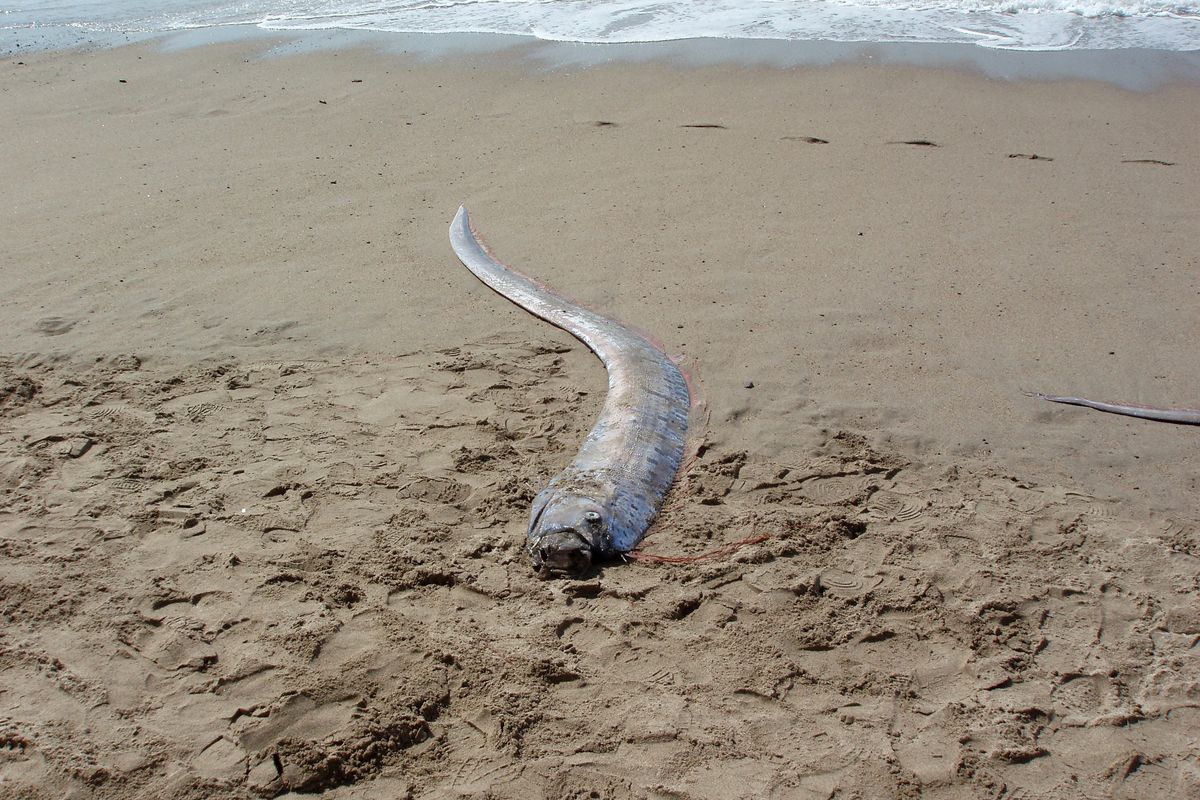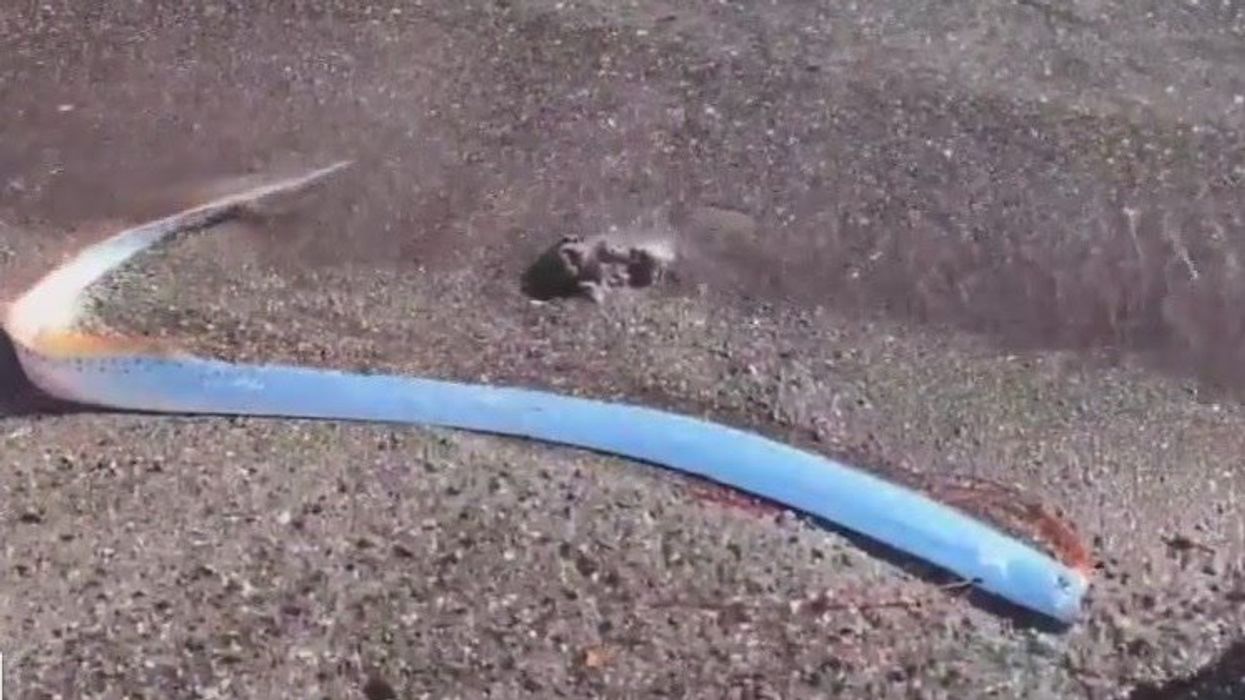A rare fish has washed up on Tasmania's Ocean Beach, and some people have shared superstitions that the appearance of the creature signals impending doom for the world.
(Not alarming at all...)
Sybil Robertson was casually walking her dog on the beach when she became one of the few to discover an oarfish.
"I was watching a sea eagle flying around and I noticed it was coming down onto the beach and I thought, 'That's unusual, I don't often see them land on the beach,'" Robertson recalled to ABC News AU.
She knew she could see a "long fish" which she estimated to be "a good three paces" in length (they can grow up to 8 metres in length), but wasn't exactly sure what species it was.
"As I got closer, I could see the beautiful colouring around its head and the markings on it were fabulous."
To understand what she found, Robertson took snaps of the fish and posted them to the Citizen Scientists of Tasmania social media page, where they confirmed it was indeed an oarfish.
Previous sightings
This isn't the only sighting of the elusive fish in Australia, where there are two types of oarfish.
CSIRO ichthyologist John Pogonoski noted that the country has seen "at least 70 records in scientific databases of specimens that have washed up".
Meanwhile, the oarfish has previously been spotted on a Canary Islands beach.
On February 10, beachgoers discovered the long, ribbon-shaped fish, which isn't common due to its deep-sea residence —up to 3,200 feet—in the mesopelagic zone, where there is no light.
A clip of the stranded oarfish's appearance off the coast of Playa Quemada has gone viral with over nine million views on Instagram which shows the silver-coloured fish and its orange fins.
But this isn't the only recent sighting, it has also been reported that an oarfish was seen alive at the nation's Baja California Sur beach on February 9, as per AccuWeather. In this video, the creature could be seen swimming in shallow waters and when it stopped moving, one beachgoer tried to move it closer to the water.
Why does the oarfish have this negative association?
A nickname for the oarfish is the "doomsday fish" because sightings of them have become linked with earthquakes, leading to the belief that over-six-metre-long fish can predict earthquakes or natural disasters.

This comes from Japanese folklore where the oarfish is called "Messenger of the Sea God" or ryūgū no tsukai.
Experts on the possible reasons for this
The first consideration is that seismic activity under the seabed may have resulted in the oarfish washing up on beaches, that's what scientists say may have occurred back in 2013 when two were found on beaches in California.
Rachel Grant, a lecturer in animal biology at Anglia Ruskin University in Cambridge who has studied this occurrence has previously shared her thoughts on what could be the cause.
“It’s theoretically possible because when an earthquake occurs there can be a build-up of pressure in the rocks which can lead to electrostatic charges that cause electrically-charged ions to be released into the water,” Dr Grant commented on the seismic activity.
“This can lead to the formation of hydrogen peroxide, which is a toxic compound. The charged ions can also oxidise organic matter, which could either kill the fish or force them to leave the deep ocean and rise to the surface,” she said.
Dr Grant also noted how a lot of carbon monoxide gas is released before an earthquake, so another possibility is that this may impact deep-sea creatures like the oarfish.
Or the answer may be manmade machines that roam underwater.
“It may be due to seismic activity or it may be due to other factors unconnected with earthquakes, such as infrasound caused by underwater activities, such as military submarines, or pollution,” she said.
But not all experts agree...
However, Neville Barrett, University of Tasmania's fish biologist and associate professor at the Institute for Marine and Antarctic Studies, believes there is no evidence of a link between natural disasters and oarfish sightings, calling it an "old myth".
"It's just a random event, there's no real evidence there's any linkage," he told ABC News AU.
"I can imagine a significant earthquake could disturb mid-water fish and stun them and lead to some coming up, but that's at the same time [as the disaster].
"The old myth is that they wash up months or years ahead of a major event — I don't think I'd put much credence to that theory."
Elsewhere, a massive ocean was discovered beneath the Earth's crust, and there is one sea on Earth that doesn't touch any land at all.
This article was first published on 19 February 2025
How to join the indy100's free WhatsApp channel
Sign up to our free indy100 weekly newsletter
Have your say in our news democracy. Click the upvote icon at the top of the page to help raise this article through the indy100 rankings.














Donald Trump explodes at 'obnoxious' reporter